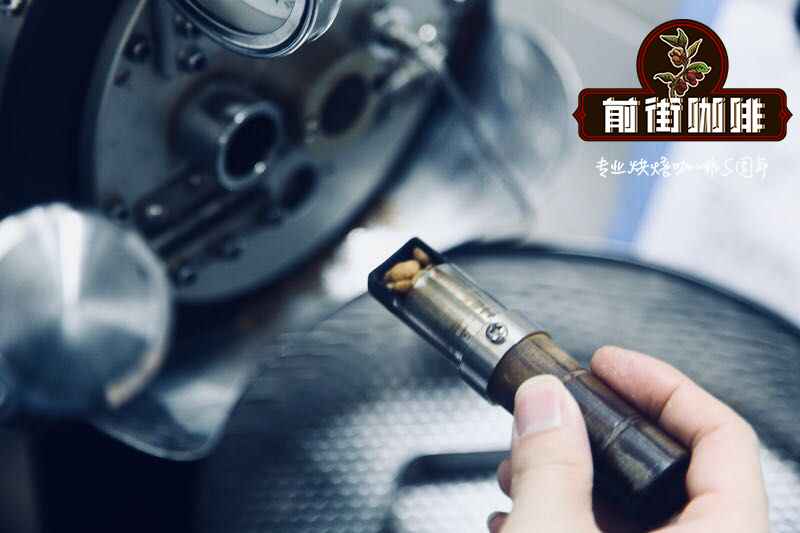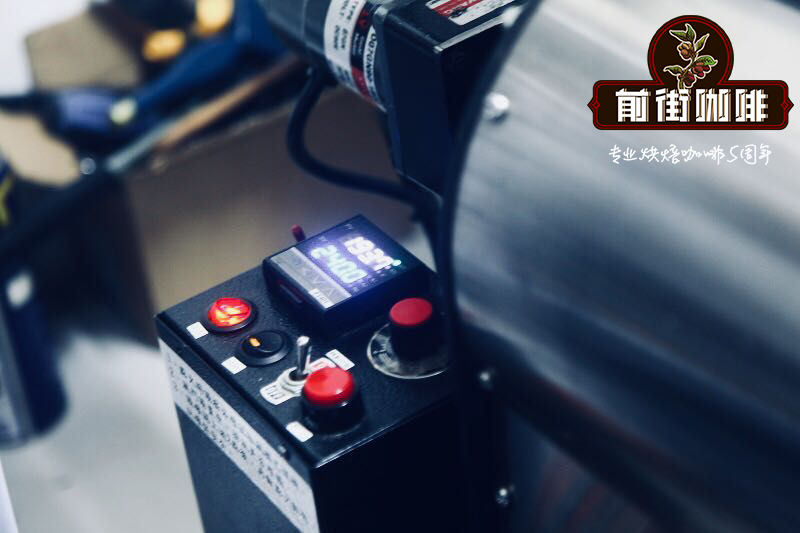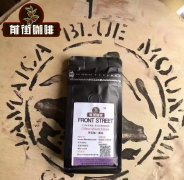Coffee roasting knowledge| What is baking air? How do you control airflow to aid baking?

01. What is baking airflow?
"Air flow" is very simple, literally, refers to the flow of air in the operation of the roaster and how such flow affects the baking results. "
This simple concept opens up a world full of opportunities.
The baking machine has a certain degree of airflow in operation, especially in the heating process, and you can also change the airflow in the baking process.
We can operate the roaster to control the temperature, speed and pressure of the air.
So why manipulate and change the airflow?
Because airflow is a key part of the baking process.
02. The relationship between airflow and heat source
Let's take a quick look at the physics lessons in high school: energy is transmitted in three ways: contact, convection and radiation.
During baking, when the coffee bean is in direct contact with the metal of the noodle in the baking bin, this way of heat conduction is contact heat conduction.
The transfer of heat from one solid to another is simply the heat transfer caused by convection.
Tang told me, "Baking airflow is one of the key factors in the formation of taste, aroma and color during coffee roasting." Air is essential for heat transfer and gas combustion, as well as for the formation of coffee flavor. "
In other words, air flow is not only related to heat, good air flow can also remove coffee beans in the baking process of bran and small particles.
However, regulating the airflow is a key part of controlling coffee roasting. "changing the ratio of conduction and convection heat transfer is the way in which manually operated roasters change the baking results."
"Coffee is a very complex organic substance. You can bake it in 1 million different ways, showing 1 million different excellent flavors in your cup. This is why coffee is exciting and fascinating. "
03. What is the effect of air convection on flavor?
Baking requires conduction and convection heat, which complement each other, especially in creating flavor.
Traditionally, conductive heat transfer locks flavor and sweetness, and convective heat transfer will help you find and understand these flavors more clearly. "

04. Judge the airflow problem
There is no single "right way" for anything in coffee roasting, not just bean temperature, baking time, and certainly not just airflow. It all depends on what coffee beans, machines and roasters think of coffee.
In other words, we can't say, "you should have an airflow between X and Y".
However, there are some guidelines that can help bakers find out whether the airflow is too low or too high for that particular coffee in a particular machine and under a particular baking target.
When the airflow is insufficient
Dave Farfara of Shenandoah Joe in Charlottesville, USA, told me that when the air flow is too low, convective heat does not provide enough energy transfer, and the baking data is "low temperature". As a result, the coffee is baked at this temperature, and the beans are roasted slowly for too long in the roaster, which looks like dough.
Tang agrees, suggesting: "too little airflow may be due to poor maintenance of the machine or insufficient fan power to produce effective cubic feet per minute (CFM) airflow (a way to measure the speed of air flowing into or out of space), which may result in acidity of & # 39; dull & # 39; acidity, or flat acidity."
But it's not just about the flavor development of coffee. If you don't have a good airflow, you can't remove impurities, which may burn and turn to ashes at the micro level in the baking bin, eventually giving your coffee beans a soot flavor, even if the beans look beautiful. "
Michael McIntyre, of Catalyst Coffee Consulting, agrees. "if the air flow is not enough, the beans lack cleanliness in the cup test. in this case, coffee is likely to be contaminated by charred impurities due to lack of effective convection air, resulting in a sense of charcoal smoke."
When the airflow is too strong
On the other hand, if the airflow is too high, the beans tend to be heated too fast. This may cause "scorched spots", that is, the edges of the beans become scorched. Due to the high temperature, the bean watch was scorched before the interior was developed.
Even if the baker avoids the scorch, he can taste the effect in the cup test. In general, excessive airflow can lead to an unpleasant sour taste due to shorter baking time. "
05. What is the difference between wind temperature, wind speed and wind pressure?
So far, we have been talking about airflow as if it were a simple thing. But it's not that simple. The heat transfer in the baking process is affected by the temperature, speed and pressure of the air.
"the temperature of the air is important, but so is the speed at which the air passes," Bill said. "the biggest risk is to oversimplify the loss of air flow."
While airflow speed is important, you may instead rely on pressure measurements. "measuring airflow speed is difficult because smoke and oil pollution prevent these devices from providing accurate readings, whether there is a gas meter or something like that," Bill explained. "there is a direct correlation between pressure and speed, so the best thing to do next is to use a pressure gauge, such as a Magnehelic."
What is the relationship between pressure and speed?
In fact, the relationship between speed and pressure is very close, because what we really control is not the pressure, but the speed and the temperature of the air. In other words, you have to control the speed of the wind according to the pressure reading.
Although the concept may seem complex at first, it will become simple as time goes by and experience accumulates. "your brain will make a connection with the dial settings on Magnehelic, and with your baking software, and eventually find the nodes of your time, temperature benchmark and pressure settings.
06. How to control the airflow?
Now we understand the impact of airflow speed and wind speed, but how to control it? Michael recommends adjusting the throttle or variable fan at key baking points.
He added that some bakers prefer to use full air flow and bake by adjusting other variables, such as gas pressure or firepower.
He suggests keeping the amount of beans at 50-60% of the capacity of the bakery, and when you find that your roaster doesn't promote good air flow, be sure to think about the relationship between the baking bin and the amount of beans you put in.
But remember, don't expect the same amount of airflow at all stages of baking.

07. Different airflow during baking
Let's take a look at the baking process step by step.
"if you have too much convective heat at the beginning of baking, it may cause the moisture to be removed too quickly," Bill said. we hope to dehydrate the beans as soon as possible, but we don't want the beans to become so dry in the early stages that they may lose their flavor characteristics. "
"at the beginning of baking, less air allows heat to enter the beans for internal thermal reaction (absorbing energy in the form of heat), because we need Maillard reaction to occur, we need Strecker (amino acids react with α-dicarbonyl compounds, lose one molecule of CO2 and degrade to aldehydes and amino ketones with one less carbon atom, and different special aldehydes are one of the factors that cause different aroma of food. ).
When the beans start to turn yellow, they need to adjust the airflow. "We need to help beans peel off the free water molecules on the coffee."
Michael warned of the importance of airflow to the lower bean temperature. "A machine with high flexibility in airflow control can achieve ideal quality loss at a lower bean temperature."
08. Example: how to change the airflow
Controlling airflow doesn't just follow a fixed pattern. As Michael puts it, "just as you adjust the flame and speed for different coffees such as Pacamara, Maragogype, peaberries, naturals and low-density coffee, it's also important to observe the airflow."
How to adjust these air currents? Take tanned coffee as an example. "I tend to use less air flow during the dehydration stage of roasting sun-cured coffee, which increases gradually after an explosion."
We have discussed how conducting heat increases sweetness and how convective heat reflects cleanliness. Sun-cured coffee is famous for its sweetness and fruity flavor, while washed coffee is famous for its cleanliness.
"I think increasing the heat of contact can bring better fruit tonality and sugar to sun-cured coffee. However, you must also give air flow more actively at the end of the baking period, as the sun-dried beans may become mixed and unclear due to poor exhaust. "
But even so, there is room for experiment. Because this is not a universal rule, "Michael stressed." Because coffee always surprises us. "
Airflow: this is the key to baking.
Simple as it may seem, more airflow means more convective heat and better clarity.
Mastering this is as challenging as other aspects of coffee roasting.
How much airflow should you use to bake high-altitude sun-cured coffee and bring higher sweetness?
With that washed Colombian coffee, how should you adjust the size and frequency of the airflow during dehydration?
The more experiments we have done on coffee roasting, the more we will find. And this is one of the most exciting things about being a coffee roaster.
So, play with the wind. Try to use the same kind of coffee to create a different taste, on the contrary, use different coffee to create the same taste. Take careful and detailed notes, make a comprehensive evaluation, but most importantly, have fun.
Important Notice :
前街咖啡 FrontStreet Coffee has moved to new addredd:
FrontStreet Coffee Address: 315,Donghua East Road,GuangZhou
Tel:020 38364473
- Prev

How to adjust the grindability of espresso what is the standard of a good espresso
Espresso is also widely recognized, and you can enjoy various types of espresso machines at home, such as mature manual models, fully automatic types and capsules that can be brewed more easily. In addition to the machine that uses the capsule, you also need to prepare your own coffee beans. Which coffee beans are suitable for grinding? Let's take a look at how to grind coffee beans suitable for espresso. Italian style
- Next

How to choose coffee beans that suit your taste? Is the roasting of coffee beans as fresh as possible?
Choosing coffee beans is very important for enjoying delicious coffee. Coffee brewed with coffee beans in a bad state usually has a strong sour taste and is difficult to drink. This time, let's take a look at the basics of how to choose coffee beans. Some instant products purchased in coffee shops can be drunk by brewing hot water, while products sold in powdered form can be extracted immediately after opening.
Related
- Beginners will see the "Coffee pull flower" guide!
- What is the difference between ice blog purified milk and ordinary milk coffee?
- Why is the Philippines the largest producer of crops in Liberia?
- For coffee extraction, should the fine powder be retained?
- How does extracted espresso fill pressed powder? How much strength does it take to press the powder?
- How to make jasmine cold extract coffee? Is the jasmine + latte good?
- Will this little toy really make the coffee taste better? How does Lily Drip affect coffee extraction?
- Will the action of slapping the filter cup also affect coffee extraction?
- What's the difference between powder-to-water ratio and powder-to-liquid ratio?
- What is the Ethiopian local species? What does it have to do with Heirloom native species?

